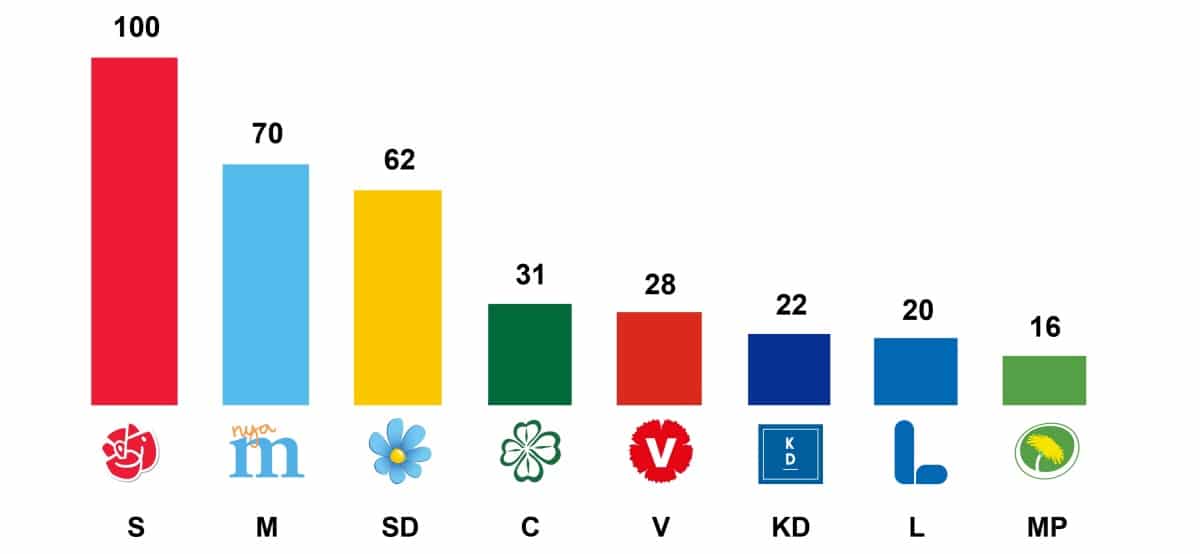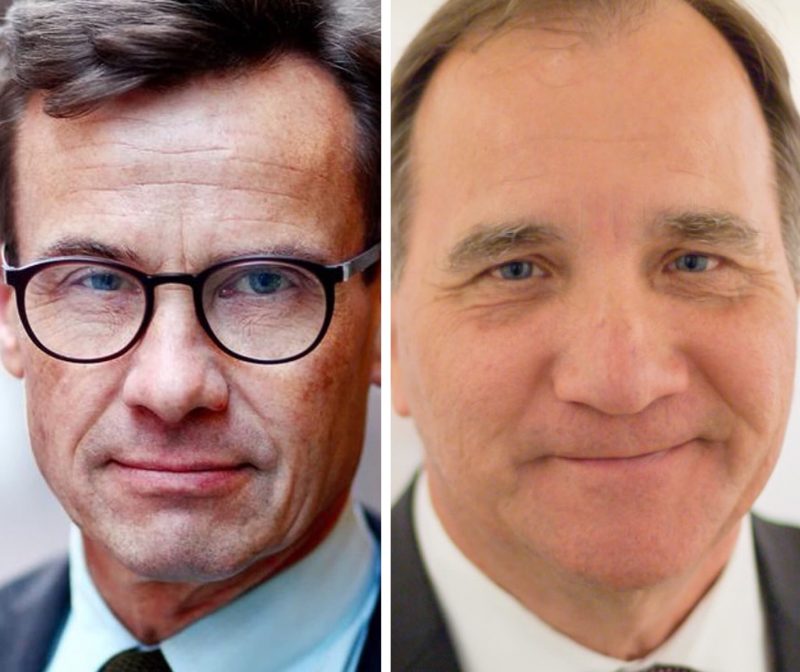The September election created a deadlock in Swedish politics. The two traditional blocks have almost the same strength in the parliament: on the right side the Alliance (a constellation of four liberal/conservative parties) has 143 seats, and on the left side there are three parties that have 144 seats. Remaining 62 seats belong to an ultra-right party shunned by all the others. That is, neither side – left or right – can win the vote for prime minister with their own votes only. To win the prime minister post it’s necessary to get at least 175 votes unless the other side abstains from voting.

The Speaker controls the procedures. Trying to assess which party has the best chance of getting enough support, the Speaker will meet with the leaders of all parties, one-on-one. He will choose one person and ask him to present his candidate (usually him- or herself) in the parliament, within two weeks. That’s when the log rolling begins – i.e. bargaining for votes within the parliament. If enough support can be mobilized, the Speaker will formally present him to the parliament as a candidate for prime minister. If not, the Speaker will start a new round of meetings with party leaders, and so on.
First in line to try was Ulf Kristersson, chairman of the Moderates. He was probably hoping to get support from the ultra-right party, but they declared that they won’t support any candidate that doesn’t promise to fulfill some of their campaign promises. With vetoes from two parties in the Alliance, that was out of the question. And the parties on the left wing would of course never support a conservative candidate. Consequently, after two weeks, Kristersson had to report “fail” to the Speaker.
Next in line was Stefan Löfven, chairman of the Social Democrats, leader of the interim government. His hope and aims were most likely that he could break the Alliance and persuade the Liberals and the Center Party to support him. However, his hope failed, and at the end of his two weeks, he had to admit that he too had failed.

During a press briefing, the Speaker pointed out that “the will to compromise has been limited” – a statement that made the reporters laugh. In fact, no one has moved an inch – positions are locked. Instead of giving a third person a chance, the Speaker decided that he’ll try to shuffle the cards and loosen the positions by inviting the party leaders to explain their standpoints to him, in front of the others. (The outermost parties excluded, though.) Will it work? No one knows. Will we have a new government in place before November 15? No one knows.
An interesting twist is that the budget is expected to be presented on November 15, even if there’s no new government in place. The interim government is only allowed to present a prolongation of this year’s budget, i.e same budget as last year. However, any party can present and propose a budget of their own. If such a partisan budget should be approved by the parliament, a government that is formed later may have to run on another party’s budget… not an ideal way to start the reign.
So far, the Moderates have announced that they’ll be proposing a new budget of their own, on November 15. Who’s next?
Stay tuned…
Bar Chart Legend – Swedish Parliament Seats 2018
S – The Social Democratic Party, progressive left (100 seats)
M – Moderates, conservative right (70 seats)
SD- Sweden Democrats, ultra-right (62 seats)
C – Center Party, liberal middle (31 seats)
V – The Left Party, leftmost (28 seats)
KD – Christian Democrats, far right (22 seats)
L – Liberals, liberal middle (20 seats)
MP- The Environment Party, middle left (16 seats)
